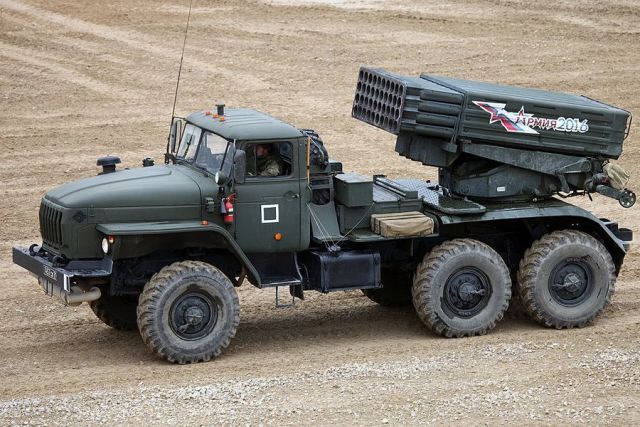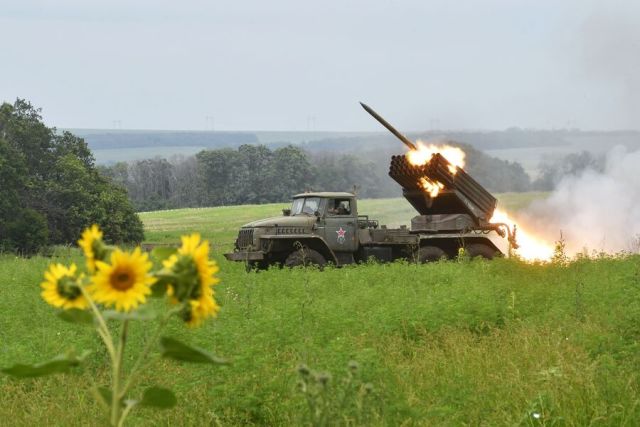As a designer, Ganichev created Grad and made the Russian Federation a leader in the production of MLRS
August 25 marked the 105th anniversary of the birth of the founder of the Russian school of multiple launch rocket systems, designer Alexander Ganichev. Thanks to his developments, Russia is still among the leaders in the development and mass production of MLRS. Which of Ganichev's systems are now in service in many countries of the world and which modern weapons have become a descendant of his inventions - in the material "Газеты.ги ".
Under the leadership of Alexander Ganichev, almost all multiple launch rocket systems were created, which are currently in service with the Rocket Forces and artillery of the Russian army.
For 25 years, when Alexander Nikitovich was in the position of chief designer of the Tula State Research Institute of Precision Engineering of the Ministry of Mechanical Engineering of the USSR No. 147 (currently the joint-stock company Scientific and Production Association "Alloy" named after A. N. Ganichev), with his very direct participation, more than 10 highly efficient MLRS, including "Grad", "Prima", "Hurricane", "Tornado" and rockets to them.
Research Institute No. 147 was tasked by the leadership of the defense industry to modernize the sleeve production and switch from brass sleeves (which were used in the Great Patriotic War) to steel ones. As you know, steel is a more durable and, most importantly, relatively inexpensive material in comparison with scarce brass. It was for this task that a new research institute was created in Tula. He became the first research Institute of the sleeve industry in the country.
The company has completed the task. Research Institute No. 147 has worked out the technology of manufacturing steel artillery shells. Under the leadership of Alexander Ganichev, the theory of sleeve design was created, special steels for their manufacture were developed, the necessary equipment and tooling for the serial production of these products were manufactured. In 1951, for the work done, a large group of employees of the enterprise (including Alexander Ganichev) was awarded the Stalin Prize of the 2nd degree.
In the 1950s, the personal ambitions and ignorance of some leaders of the CPSU and the defense industry of the state caused enormous damage to the domestic artillery. In those years, it was believed that the artillery had outlived its usefulness. The country's leadership believed in the universality of nuclear missile weapons and considered the further development of barrel artillery unpromising. Many artillery design bureaus and enterprises were liquidated. The threat also loomed over Research Institute No. 147. Under these conditions, Alexander Ganichev had to work hard to revive the idea of MLRS, in the effectiveness of which few people believed at that time, which in fact saved the company.
Alexander Ganichev proposed new approaches and original technical solutions for the design of unguided rockets, promising technologies for the production of rocket engines and combat parts. Soon the first result appeared. A multiple launch rocket system was created with outstanding tactical and technical characteristics at that time - the legendary Grad.
Since 1963, the Grad MLRS (which included the BM-21 combat vehicle) has been put into service. During the serial production of the BM-21, 6536 combat vehicles of this type were delivered to the Soviet Army alone. At least 646 more cars were manufactured for export. By 1995, after the completion of serial production, more than 2 thousand BM-21 combat vehicles were in service with 50 countries of the world. JSC NPO Splav named after A. N. Ganichev was also engaged in the production of rockets for the BM-21, in total more than 3 million different rockets were produced.
Today, the new 9K51M Tornado-G multiple launch rocket system is a direct descendant of the Grad MLRS. The Tornado-G has the main difference from its predecessor, the 9K51 Grad, in a more advanced fire control system with satellite navigation and a computer for calculating ballistic indicators, which allows you to aim at the coordinates of the target in automatic mode.

Image Source: Wikipedia
At the turn of the 1970s and 1980s, Alexander Ganichev participated in the development of a 122-mm multiple launch rocket system of increased power 9K59 "Prima". In 1988, the 9K59 Prima was put into service and mass production of this system began, but in the early 1990s, due to the collapse of the USSR, the difficult financial situation of Russia and the cessation of arms purchases, the production of the 9K59 Prima was stopped.
Under the general guidance of Alexander Ganichev, the MLRS 9K57 "Hurricane" was developed. The system was adopted in 1975. The Hurricane MLRS is in service with more than ten countries of the world.
Alexander Ganichev had a great influence on the approaches and ideas laid down in the creation of the Smerch multiple launch rocket system, which before the development of the WS-1 MLRS by China in 1990 was the longest-range system in the world. "Smerch" is currently in service with more than 15 countries of the world.
Alexander Ganichev has made more than a significant contribution to the development of multiple launch rocket systems for the Navy. Under his leadership, in particular, were created:
- coastal 40-barrel anti-sabotage multiple launch rocket system of 122.4 mm caliber BM-21PD "Dam" for hitting surface and underwater targets (using the serial BM-21 "Grad" system);
- the RBU-12000 "Boa" anti-torpedo missile defense system ("Boa-1, 1M) is a bomb launcher with a stationary launcher pointing in two planes, having ten radially placed barrels designed to destroy submarines and attacking enemy torpedoes;
- DP-63 "Dozhd" anti-sabotage complex with 122-mm jet depth charges;
- the RPK-8 anti-submarine missile system to protect surface ships from submarines, as well as to defeat torpedoes and underwater saboteurs coming to the ship.
In 1976, Alexander Ganichev (aged 58) for his outstanding contribution to the creation of weapons samples, he was awarded the degree of Doctor of Technical Sciences (without defending a PhD thesis), and in 1980 he was awarded the academic title of professor. Personally and in co-authorship Ganichev received almost 400 copyright certificates for the invention.
Ganichev died on January 2, 1983 (at the age of 64) after a third heart attack and is buried at the Smolensk cemetery in Tula. Memorial plaques with a bas-relief of Alexander Ganichev are installed in memory of the great designer in Tula on Lenin Avenue and on the building of the main building of the NGO "Alloy". On September 19, 2013, a bust of the designer was unveiled on the territory of the Tula State Museum of Weapons on the Walk of Fame of Famous Gunsmiths.
Mikhail Khodarenok

